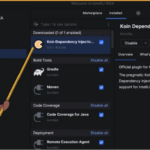🚀 Simplify Integration
Use the Facade Pattern to streamline your integration of complex third-party libraries. Encapsulate interactions with external systems within a single facade interface. This reduces dependencies on external APIs and simplifies updates or replacements of libraries. The approach enhances your codebase’s cleanliness, robustness, maintainability, and scalability.
🛡️ Shield Your Application
Applying the Facade Pattern effectively shields your core application from external changes and complexities. This isolation reduces the risk of bugs during library upgrades and minimizes maintenance efforts. However, while facades simplify functionality access, they can obscure some of the more complex features of underlying libraries. Be cautious, as oversimplification might lead to performance overheads.
🔄 Example: Seamless Library Switch
For instance, in a native Android or Kotlin Multiplatform project using an analytics library like Mixpanel, a facade implementation allows for a seamless switch to another library, such as Amplitude. By defining a standard interface for analytics operations, the specifics of Mixpanel or Amplitude are confined to their facade implementations. Switching between analytics tools—or integrating any other analytics library—requires minimal changes to the rest of your application. This significantly reduces potential errors and simplifies updates.
Leverage facades to maintain a flexible and error-resistant system. This pattern is crucial for projects where long-term maintenance and easy third-party library upgrades are essential.
#Android #Kotlin #iOS #KotlinMultiplatform #KMP


